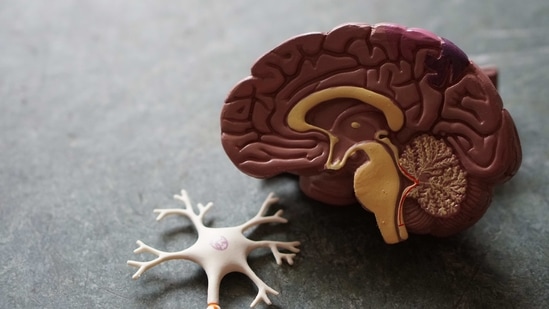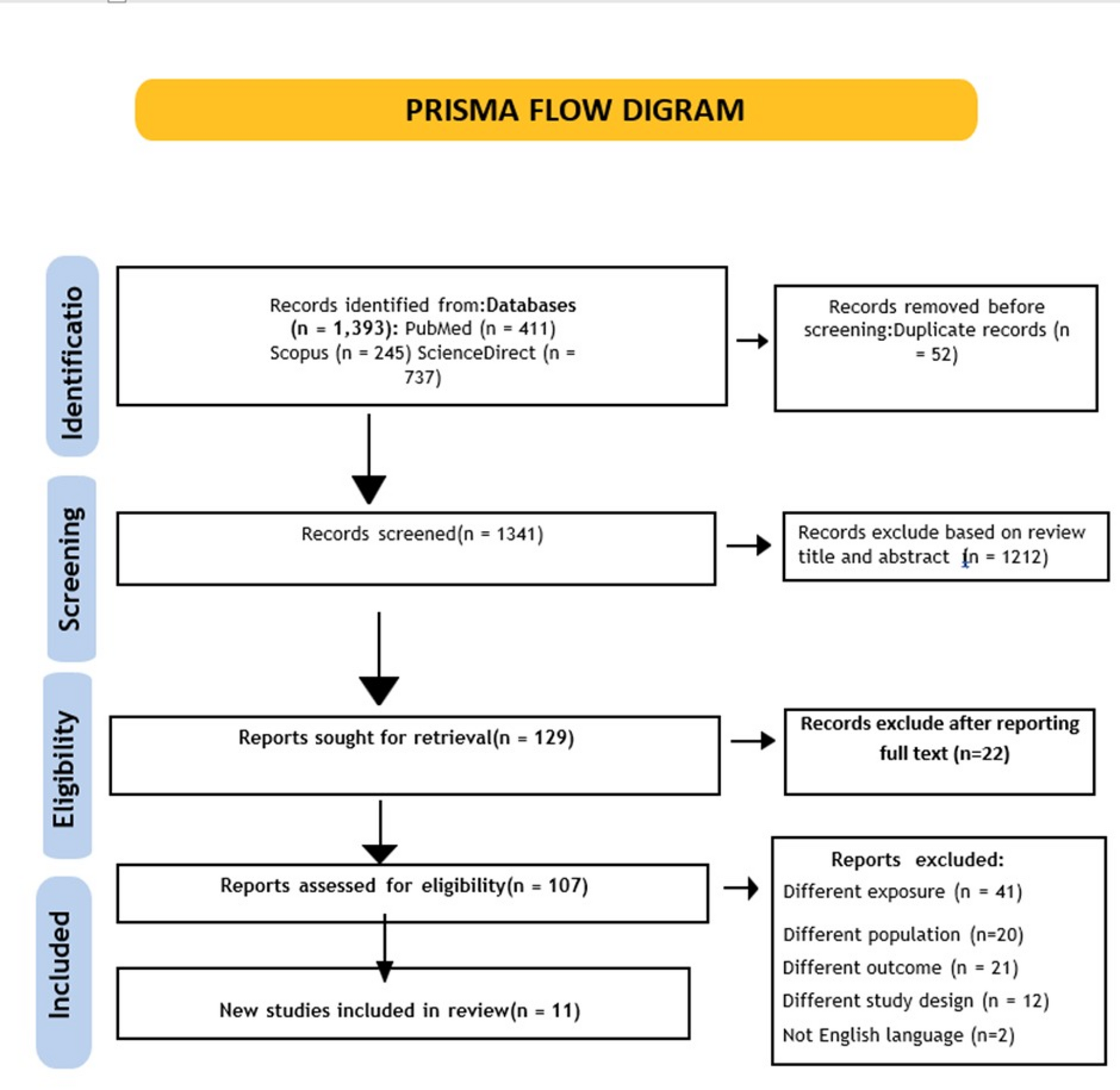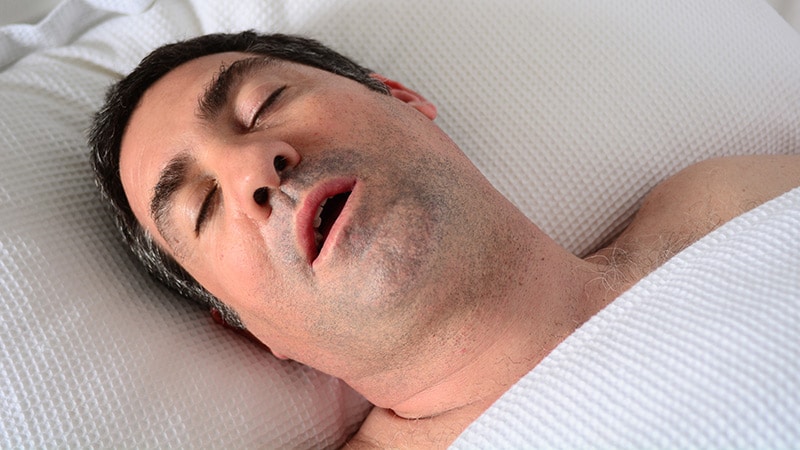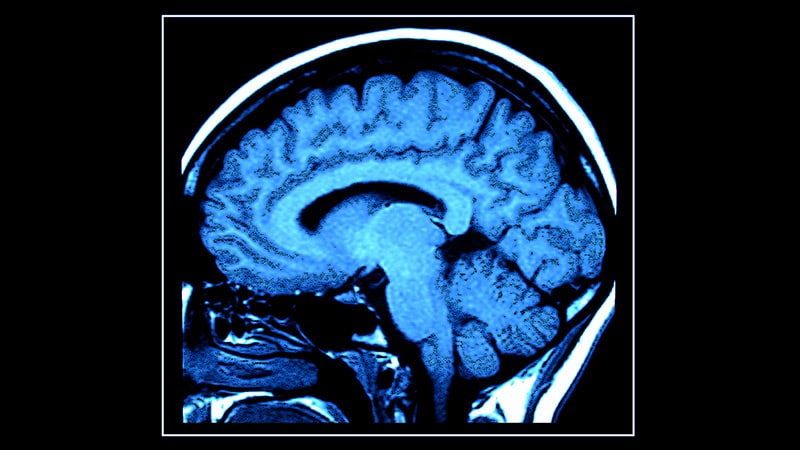HAVANA: Activists, journalists and relatives of jailed dissidents say they were briefly detained or prevented from leaving their homes by state security agents Tuesday on the anniversary of the “Maleconazo,” the largest protest Fidel Castro faced during his rule.
On August 5, 1994, hundreds of people took to the streets of Havana’s Malecon waterfront to protest, an event that triggered the rafter crisis during which many Cubans fled by sea to the United States.
The government attributed the protests to incitement by Radio Marti, a Washington-funded station that broadcasts news into Cuba.
Nearly five years after Castro’s death, historic protests shook the island on July 11, 2021, when thousands took to the streets, resulting in one death, dozens injured and hundreds arrested. Many protesters remain behind bars.
The government claims those marches were also orchestrated by Washington.
President Miguel Diaz-Canel said the “Maleconazo” anniversary was a reminder that “there will always be dark forces lurking against a genuine Revolution in difficult moments,” posting a photograph on X of Castro confronting protesters in 1994.
Tuesday saw “surveillance, house arrests, arbitrary detention, and selective Internet shutdowns,” according to Cubalex, a Miami-based NGO.
Manuel Cuesta Morua, a dissident who promotes democratic transition in Cuba, told AFP via WhatsApp that since early morning he had been “besieged by the police” in a “type of house arrest, without a court order.”
The government “activated its repressive apparatus” following the “police pattern” applied on sensitive dates, said Yoani Sanchez, director of independent newspaper 14ymedio.
She said her husband, Reinaldo Escobar, also a journalist for the outlet, “was detained for a couple of hours in Havana.”
Independent journalist Camila Acosta told AFP that a state security officer had been stationed at the entrance of her house early in the morning.
Among others in similar situations reported by Cubalex were representatives of the Ladies in White rights group and the father of a young man imprisoned for participating in the July 2021 protests.
Category: 8. Health
-

China tackles chikungunya virus outbreak with wide range of measures as thousands fall ill
-

World-First Gonorrhoea Vaccination Program Launches in England — Vax-Before-Travel
England (Vax-Before-Travel News)The United Kingdom (UK) has recently initiated a significant shift from a focus on treating illness to prioritizing prevention, as part of its Plan for Change aimed at making the NHS fit for the future.
In the UK, people are experiencing more years of ill health, and the disparity in healthy life expectancy between the wealthiest and the poorest is widening.
To better protect those at high risk of gonorrhoea, the NHS and local authorities have begun rolling out a world-first vaccination program in England.
Launched on August 4, 2025, sexual health clinics will offer a free vaccine to individuals with a recent history of multiple sexual partners and a bacterial STI within the past 12 months.
According to the NHS, the 4CMenB (Bexsero®) vaccine is designed to shield those most at risk of gonorrhoea, potentially preventing up to 100,000 cases of the disease and alleviating pressure on essential NHS services.
Minister for Public Health and Prevention, Ashley Dalton, commented in a press release, “Rolling out this world-leading gonorrhoea vaccination programme in sexual health clinics in England represents a breakthrough in preventing an infection that has reached record levels.”
“I strongly encourage anyone eligible to come forward for vaccination, to protect not only yourselves but also your sexual partners.”
The ground-breaking vaccination programme comes at a critical time, with diagnoses of gonorrhoea reaching their highest levels since records began.
In 2023, a record 85,000 cases of gonorrhoea were reported in England, three times higher than in 2012.
This 4CMenB vaccine will protect thousands of people and save the NHS more than £7.9 million over the next decade. It will also help combat increasing levels of antibiotic-resistant strains of the disease.
Eligible patients attending clinics in England for the gonorrhoea vaccine will also be offered mpox (JYNNEOS), hepatitis A and B, and HPV vaccinations, providing comprehensive protection against an array of diseases.
The 4CMenB vaccine is expected to be available in sexual health clinics in every region in England by early September 2025.
In the United States, GSK’s Bexsero® (MenB-4C) vaccine is U.S. FDA-approved and offered at most clinics and pharmacies.
Continue Reading
-

Avoid ultra processed food to reduce weight, new study reveals
“This study puts beyond doubt what many of us have long said: it’s not just about ingredients; it’s about the way food is processed. Since most of the UPFs are high on fats/sugars and salt, FSSAI must now adopt strong, clearly worded front-of-pack warning labels while amending its regulations” said Dr. Gupta, who is a paediatrician and nutrition advocate, said.
NAPI called for treating UPFs as a distinct and unsafe category of food, requiring stringent regulation to end advertisements and marketing of the HFSS food products as recommended by the Economic Survey 2024-25.
As India moves toward its 2025 target of halting the rise of obesity and diabetes, this study offers a wake-up call to policymakers to focus on processing levels as much as nutritional thresholds and take swift action to protect the health of the public, especially children, Dr Gupta said.
India also shows a rapid growth of UPFs at CGAR of 13.37%, from 900 million USD to 37.9 Billion USD. It means per capita UPF sales increased from Rs. 37 to Rs. 1964, a 53-fold rise.
“It is during this period that obesity almost doubled. To halt obesity, action has to reduce this consumption speed,” he said.
Given the new trade agreements signed with the UK, UPFs /HFSS food will be imported cheaper.
“That may further increase consumption and put a risk to peoples’ health. While the UK is set to enforce a 9 PM watershed on HFSS products advertising on television and already uses a traffic light warning label system in front of the pack of HFSS food products; India has no comparable legal safeguard on labelling as yet. India’s weak laws to control advertisements are open to interpretation, allowing full freedom to the food industry,” he added.
Continue Reading
-

Neurosurgeon says avoiding 5 habits can help reduce risk of Alzheimer’s in old age; how many of these do you practise? | Health
Alzheimer’s disease is the most common cause of dementia that begins with the appearance of a buildup of proteins in the brain, causing brain cells to die over time and the brain to shrink. While no cure exists, there are certain steps you can take to reduce the risk of developing the disease.
The CDC has found five different ways to reduce your risk of developing Alzheimer’s. These are risk factors that have been clinically shown to increase your risk of developing Alzheimer’s. (Freepik) In an Instagram post shared on April 21, Dr Zayed Almadidy, MD, neurosurgeon, shared the 5 habits which, if you avoid they can help reduce the risk of developing dementia.
Risk factor linked to a higher likelihood of developing dementia
In the video, Dr Almadidy stitched a clip of an old woman, diagnosed with Alzheimer’s disease, struggling to recognise herself in the mirror. He explained that this is often a result of the disease.
“Very often, as a neurosurgeon, people ask me, ‘What can I do to reduce my risk of developing Alzheimer’s?’ The CDC has found five different ways to reduce your risk of developing Alzheimer’s. These are risk factors that have been clinically shown to increase your risk of developing Alzheimer’s and dementia,” he explained. Let’s find out what they are.

Hearing loss is sometimes a part of ageing, but it has been shown to be linked and correlated with the development of dementia.(Unsplash) 5 habits to avoid to reduce the risk of Alzheimer’s
Here are the 5 habits the neurosurgeon listed that you should remove from your lifestyle to reduce the risk of Alzheimer’s:
1. Tobacco and alcohol use
More and more data is now starting to surface to show that no amount of alcohol is considered safe, but an excessive amount of alcohol is especially dangerous.
3. Hearing loss
Hearing loss is sometimes a part of ageing, but it has been shown to be linked and correlated with the development of dementia.
3. High blood pressure
High blood pressure that is uncontrolled for long periods of time. This can create several pathological and vascular issues within the brain, which can significantly increase your risk of developing dementia.
4. Uncontrolled diabetes
Poorly controlled blood sugar within diabetes has profound impacts on the entire body, including the brain.
5. Lack of physical activity
Having a sedentary lifestyle has been shown to increase the risk of developing dementia.
After listing the 5 habits, the doctor warned: “If you have any of these risk factors, I recommend you speak to your primary care physician. Controlling these risk factors will significantly improve your likelihood of maintaining a healthy brain as you age.”
Note to readers: This article is for informational purposes only and not a substitute for professional medical advice. Always seek the advice of your doctor with any questions about a medical condition.
Continue Reading
-

Association of smoking with depression among tuberculosis patients: a systematic review and meta-analysis | BMC Public Health
The electronic search identified a total of 1393 studies as shown in Fig. 1. After removing the duplications, the titles and abstracts of 1341 studies underwent eligibility assessment, followed by the full-text analysis of 107 studies. Of these, 96 were considered inappropriate for inclusion because they evaluated various populations (n = 20) or exposures (n = 41), had different outcomes in the studies as shown by n = 21 had different study designs as represented by n = 12, or the studies were not conducted in English, n = 2. Eleven individual studies formed the basis of this review.
Fig. 1 PRISMA Flow Diagram of Selection Studies
Table 1 provides an overview of the participants’ characteristics for the eleven included studies in chronological order and by study design. Eight studies were cross-sectional [10, 23,24,25,26,27,28,29]. One was a quantitative cross-sectional survey with a mixed-methods design [30], and two were prospective cohorts [31, 32].
Table 1 Summarize the study features of the included studies This analysis included data from various LMICs across several regions. One study focused on data from specific countries in Southeast Asia, such as Myanmar [27]. Data from multiple Asian countries, including India [28, 32], Bangladesh [30], Nepal [23], and China [29] were analysed in a separate study. The remaining studies investigated data from individual countries in various regions: Romania [31] in Eastern Europe, Brazil [25, 26] in Latin America, South Africa in Sub-Saharan Africa [24], and a study from Ethiopia in East Africa [10].
The number of participants varied from 46 [31] to 1252 TB patients [29]. Across all studies, men comprised the majority of participants [10, 23, 25,26,27,28,29,30,31,32]. However, the South African study included only male participants [24]. The mean age varied from 32.69 to 46 years old.
Risk of bias
There was a moderate risk of bias in eight studies [23,24,25,26, 28, 31,32,33], and a low risk of bias in three studies [10, 27, 29]. In the majority of included studies, the confounding factors were not identified. Such oversight resulted in a significant amount of moderate bias in the majority of the results as shown in Tables 2 and 3.
Table 2 Risk of bias in cross-sectional studies on the association between smoking and depression among TB patient* Table 3 Risk of bias in cohort studies on the association between smoking and depression among TB patients* Depression measurement tools
All included/eligible studies measured depression symptoms using a quantitative self-reported psychometric instrument that was validated for the tuberculosis patients.
Six studies employed the 9-item Patient Health Questionnaire (PHQ-9) measure for depression, which was the most often utilised questionnaire [10, 23, 25,26,27,28, 32]. Furthermore, one study [31] employed the 14-item Hospital Anxiety and Depression Scale (HADS), which consists of seven items for each depression subscale. Another study combined the use of the 14-item HADS with the 9-item Patient Health Questionnaire (PHQ-9) [29]. One study made use of the Structured Clinical Interview for the DSM-IV (SCID) [30]. For the assessment of depression, a scale that included measurements from the Kessler Psychological Distress Scale [24] and the Study Short Form-36 (SF-36) version 2 was employed [25].
Smoking and depression
Cross-sectional studies
Most studies conducted across different geographical regions found a strong association between smoking and depression.
Table 4 demonstrates that from 9 cross-sectional studies, 5 studies found an increased risk of depression associated with smoking among tuberculosis patients in many countries, such as Ethiopia, Nepal, South Africa, Brazil, and India all showed that smokers have significantly higher rates of depression as compared to non-smokers [10, 23,24,25, 28].
Table 4 Summary of findings from included studies According to Ethiopian research, smokers had 9.08 times higher rates of depression than non-smokers [AOR = 9.08; 95% CI (3.35, 24.61); p < 0.001] [10]. In a similar vein, research conducted in Nepal found that PHQ-9 scores were much higher among current smokers than in nonsmokers. [P = 0.02; B = 1.379] [23]. Furthermore, Indian research found that the prevalence of depression among TB tobacco users is 67.7%, with a p-value = 0.00001 in non-smokers [28]. Furthermore, research with a large sample size of 1005 patients carried out in South Africa found a statistically significant correlation (p-value = 0.017) between current tobacco use and depression, with around one-third (33.5%) of the patients receiving a diagnosis [24].
Similarly, Brazilian research found that there was a significant difference (p = 0.008) in HADS scores between current and former smokers and non-smokers. Proportion of depression among patients who did not have depression (15.3%) were significantly lower compared to the proportion of TB patients who were current smokers and had depression (44%) [25].
A study conducted in Myanmar found that the PHQ-9 ratings of smokers with depression were not substantially different from those of non-smokers. Former smokers (n = 9 (7.38%), AOR = 0.59; 95% CI (0.27, 1.32)), current smokers were (n = 1 (25%) [AOR = 2.49; 95% CI (0.25, 24.87) p = 0.29), non-smokers (n = 24 (11.82%) AOR = 1), former smokers were less likely to have depression than never smokers; however, current smokers might be more likely to have depression than non-smokers [27]. The associations of non-smokers, former smokers, and current smokers with depression did not differ according to additional studies conducted in China, Bangladesh, and Brazil [26, 29, 30].
Out of eleven studies, only two of them compared depression risk between current and former smokers, despite trends indicating more likelihood of depression among current smokers [27, 29].
Cohort studies
Although five cross-sectional studies revealed that there is an association between smoking and depression among TB patients, two cohort studies found that there was no association between current smoking status and depression [31, 32]. These differences in findings may be caused by the small sample sizes of the cohort studies (46 and 86 patients), compared to the numbers in the cross-sectional studies. Smaller samples lack adequate power to observe differences. Researchers reported that smokers experienced higher rates of stress and depression, but the p-value of 0.19 did not indicate statistical significance [32]. To evaluate depressive symptoms, the nine-item Patient Health Questionnaire (PHQ-9) depression scale was used. Three visits were made to screen for depression via the PHQ-9 questionnaire. When the groups that received counselling or medication and had psychiatric referrals between the initial visit and final visit were compared, there was a statistically significant difference in the mean PHQ-9 score (p = 0.001). Following a psychiatric evaluation, patients who were started on medication had a decrease in the PHQ-9 score that was not statistically significant (8.85 ± 5.45 and 8.83 ± 5.07, p = 0.053) [32].
Meta-analysis
Initially, only 4 studies reported adjusted odds ratio calculation in multivariate analysis for the association of smoking and depression out of 11 reviewed articles [10, 23, 29, 30],. On the other hand, univariate analysis was performed in 3 articles, and in 4 articles, only p-values were reported without the calculation of effect sizes. To maximize the inclusion studies, we contacted the corresponding authors of the remaining studies for unreported data, but only one provided partial data related to multivariate analysis that we included in our analysis [26].
Due to the lack of multivariate-adjusted effect size and inability to obtain unreported data, only five studies were included in the meta-analysis, all of them were cross-sectional studies as shown in Fig. 2 which demonstrates the random effects model result about the association between smoking and depression among tuberculosis (TB) patients and reveals that smoking TB patients have approximately 2.56 times more depression than non-smoking TB patients. The smoking habit in TB patients was significantly associated with depression; p = 0.003.
A forest plot was generated using RevMan 5.3. The result of the heterogeneity statistic (I2 = 71%) shows a high degree of heterogeneity across the included studies in the meta-analysis, which means that there is variation in the effect sizes between the different studies. This difference likely arises from a mix of factors, including the various tools used to measure depression (like PHQ-9, DSM, and HADS), the sizes of the samples, the types of tuberculosis, the cultural backgrounds, and some confounding factors that we just couldn’t measure.
Publication bias
Publication bias was assessed by the Eggers test using Stata MP 64-bit, version 13.0 (StataCorp LLC, College Station, TX, USA). There was no indication of publication bias, as Egger’s test suggested (bias coefficient = 0.59, p = 0.874). However, since only five studies were included in the analysis, the power of the test may have been compromised to detect asymmetry; therefore, this result should be treated with caution.
Subgroup analysis
Subgroup analysis was conducted based on depression measurement tools applied in the studies. Four studies utilized the PHQ-9 tool [10, 23, 26, 29], and one study utilized DSM-IV (SCID) [30]. The PHQ-9 subgroup also had a statistically significant correlation between smoking and depression (OR = 3.36; 95% CI: 1.19–9.50; p = 0.002), but heterogeneity was high (I² = 75%). The DSM-IV tool study lacked a significant association (OR = 1.00; 95% CI: 0.37–2.70). Other preplanned subgroup analyses that were considered for this MA (e.g., TB type, region) could not be performed owing to the insufficient number of studies in the MA. High heterogeneity should be considered a significant drawback for the pooled estimates.
Fig. 2 
Forest Plot of the Association between Smoking and Depression among TB patients
Continue Reading
-

Doctors Warn of Rising Risks From Viral Medicine Challenges
The rise of social media has transformed how people — especially children and adolescents — access information, interact with their surroundings, and make decisions about their health and well-being.
It is within this digital context that viral challenges have emerged. These social media trends encourage users to perform unusual, risky, or extreme actions to attract attention. A notable example is the “Blue Whale” challenge, which went viral between 2016 and 2017. This challenge involved a series of tasks, including self-harm, social isolation, and even suicide encouragement. The “Blue Whale” challenge has been linked to several adolescent deaths worldwide, highlighting the devastating impact such content can have on young people.
One of the most recent viral challenges, “the challenge of taking the strongest medication you have at home,” has gained popularity on platforms like TikTok and Instagram. It attracted national media attention following the case of a teenage girl from Valencia, Spain, who was admitted to the intensive care unit of Manises Hospital in Manises, Spain, due to carbamazepine poisoning, a drug used to treat epilepsy.
To participate in the challenge, the teenager ingested as much of the strongest medication available at home. Upon arrival at the hospital, she was in a comatose state. Although doctors managed to save her life, her condition was deemed “life-threatening,” according to María Victoria Ordoño, MD, and María Sinisterra, MD. These doctors presented the case at the 71st Congress of the Spanish Association of Pediatrics in June in a session titled “The Other Side of Social Media: Viral Challenges, Fatal Consequences.”
During her hospital stay, the patient developed aspiration pneumonia, which responded well to intravenous antibiotics. After regaining consciousness, she admitted to ingesting the carbamazepine voluntarily as part of the viral challenge with her peers. The challenge involved demonstrating courage by ingesting the strongest medication available at home. She was evaluated by a child and adolescent psychiatrist, who confirmed that the teenager showed self-awareness of the incident and that her intent was not suicide but participation in the viral challenge. She continues to receive follow-up care from social work and child and adolescent psychiatry, with no new risk behaviors observed.
“The dangers of viral challenges like this one need to be highlighted, especially for the pediatric population. The need for group approval often drives these dangerous behaviors,” warned the doctors during their presentation.
Paracetamol Challenge
Another viral challenge circulating on TikTok and Instagram is the “Paracetamol Challenge,” in which adolescents challenge each other to ingest excessive doses of paracetamol (acetaminophen in the US). The goal is to see who can stay in the hospital the longest or who shows the most “resilience.” This challenge has been primarily reported in the United States, where an 11-year-old child tragically died earlier this year from participating. However, similar cases have also been reported in the United Kingdom, France, Belgium, Switzerland, and Spain, according to health and pharmaceutical agencies.
The French National Agency for the Safety of Medicines and Health Products issued a warning earlier this year for healthcare professionals and parents, stating that paracetamol overdose can cause severe, sometimes irreversible liver damage, which may require a liver transplant. In fact, paracetamol poisoning is the leading cause of drug-induced liver transplants in France. Overdoses can also severely affect the kidneys and pancreas.
In an interview with Agencia EFE, Spain’s international news agency, director general of Public Health at the Government of Aragón and a pharmacist by profession, emphasized the importance of raising awareness about the risks of consuming medications like paracetamol in doses higher than recommended as this can lead to permanent damage or even death.
Cooking With Medications
The “Sleepy Chicken,” also known as NyQuil Chicken, is another viral challenge spreading on social media. This challenge involves cooking chicken breasts in cough syrup, such as NyQuil, a medication used for flu and cold relief. NyQuil contains acetaminophen, dextromethorphan (a cough suppressant), and doxylamine (an antihistamine). Some videos show people eating the cooked chicken, but the primary goal of the challenge is to inhale the vapors released during cooking to induce drowsiness.
Health authorities, including the US FDA, warned in 2020 that boiling medications can concentrate their active ingredients, alter their chemical properties, and release toxic fumes. Inhaling these vapors can expose individuals to uncontrolled doses, potentially leading to severe lung damage, overdose, liver damage, central nervous system depression, and even death.
Sleep or Stay Awake Challenge
One of the most common challenges on social media platforms like TikTok is known as “Last to Fall Asleep Wins.” In this challenge, participants consume sedative medications, such as clonazepam, to compete for who can stay awake the longest. This challenge, also referred to as the “Clonazepam Challenge,” has become especially widespread in Latin American countries. It has led to adolescents experiencing intense drowsiness, dizziness, nausea, respiratory changes, and, in many cases, hospitalizations.
In 2023, 15 children aged 10-11 years were hospitalized in Guanajuato, Mexico, after participating in this challenge at a local elementary school. According to authorities, the minors irresponsibly ingested the anxiolytic drug without medical supervision, attempting to stay awake despite the drug’s sedative effects. Four of the children required severe treatment in the hospital, while the others were transferred to various health centers with their families.
Viral Challenge for Hallucinations
The “Benadryl Challenge” involves ingesting excessive doses of diphenhydramine (Benadryl), an over-the-counter antihistamine, to induce hallucinations and record the effects. This practice has led to multiple hospitalizations and deaths since 2020. One of the most tragic cases occurred in April 2023, when a 13-year-old boy in Ohio died after consuming 12-14 pills — approximately six times the recommended dose — and fell into a coma for 6 days.
In 2020, a 15-year-old girl in Oklahoma also died from an overdose related to this challenge. Additionally, three other minors were hospitalized in Texas for similar reasons. At high doses, diphenhydramine acts as a central nervous system depressant, leading to seizures, delirium, arrhythmias, coma, or even death. The FDA issued official alerts warning about the deadly risks associated with this challenge. Social media platforms, such as TikTok, also blocked the hashtag linked to this challenge in 2020, though experts caution that the content may still circulate under different names.
Clinical and Ethical Implications
Emergency services are increasingly encountering patients with nonspecific symptoms after ingesting substances or engaging in dangerous behaviors driven by viral challenges. The situation is further complicated during anamnesis as patients may omit the true cause of their exposure due to shame, fear of social judgement, or lack of awareness regarding the medical severity of the viral challenge. This lack of information can delay or distort the initial diagnosis, compromising timely and effective clinical decision-making.
The initial therapeutic approach, particularly in emergency settings, requires a multidisciplinary approach with high clinical suspicion and sensitivity to risk behaviors motivated by psychosocial factors. The absence of standardized protocols for such cases adds another layer of difficulty.
From an ethical and legal perspective, the issue is complex. Some of the substances involved are over-the-counter, while others require a prescription. This necessitates a careful review of prescription protocols, home storage practices, and clinical follow-up, particularly for pediatric and adolescent patients. There is also a growing need to discuss shared responsibility among healthcare professionals, caregivers, and digital platforms in preventing these behaviors that put young people’s health at risk.
This story was translated from El Medico Interactivo.
Continue Reading
-

Help Patients Get the Link Between Sleep Loss and Obesity
When patients share their struggles with falling asleep or staying asleep, physicians should try to assess whether obesity is playing a role. During discussions with your patients, acknowledge those concerns about sleep deprivation, help them understand possible causes and discuss ways to help them get better sleep.
Often, conditions like obesity play a role, and discussing weight issues with patients can be tricky. There are strategies to lean in gently to discussions. Here’s how to get started.
Explaining the Connection
Obesity and sleep loss are two separate but often interconnected health concerns, each with its own set of risks.
“It is well-known that obesity increases the risk of heart disease, type 2 diabetes, and high blood pressure, but obesity can also lead to structural changes in the body that make breathing more difficult and therefore contribute to sleep disorders such as obstructive sleep apnea,” explained Fariha Abbasi-Feinberg, MD, medical director of sleep medicine at Millennium Physician Group in Fort Myers, Florida. “In fact, even a 10% weight gain can increase [sleep apnea] risk by up to sixfold.”
Fariha Abbasi-Feinberg, MD In addition, she noted how the relationship is bidirectional: Obstructive sleep apnea “can impair sleep quality, affect metabolism and hormone levels, making it harder to maintain or lose weight.” Sleep loss may also interfere with the body’s natural hunger and satiety signals.
“We all have experienced cravings for certain foods after a night of poor sleep; this can lead to weight gain and the increased body weight over time increases the risk of OSA and other medical issues,” she said. “To help your patients, there’s a need to address both in order to improve health.”
Sharing Information With a Sensitive Approach
The goal here isn’t to shame patients or make them feel bad about their body image but to provide information and guidance to live healthier and sleep better. The course of discussion should be how losing weight could achieve better outcomes.
“Weight loss can improve certain sleep disorders such as obstructive sleep apnea by decreasing the amount of tissue around the upper airway and making it less likely to collapse,” said Abbasi-Feinberg. “Better sleep also supports hormone balance and appetite control, making it easier to maintain a healthy lifestyle.”
Ways That You Can Communicate With Patients
Patients trust primary care providers. Abbasi-Feinberg offered some action steps:
- Start the conversation by mentioning how a number of factors contribute to sleep apnea and weight can be one piece of the puzzle.
- Ask if they are open to discussing it further before making recommendations.
- Emphasize that even a modest change in weight can make a real difference in their sleep and energy levels.
- Encourage patients that this is a common challenge and there are options to help with weight loss.
- Consider referral to a dietitian and/or endocrine or bariatric clinic to discuss further interventions that might help promote weight loss.
Explaining the Link Between Bad Sleep and Poor Choices
Lack of sleep often triggers strong cravings, especially for high‑fat, high‑sugar snacks, Abbasi-Feinberg explained. “It ramps up brain reward systems and endocannabinoids, making junk food even more appealing while weakening self-control,” she said,
In one study, sleep‑deprived participants ate nearly twice as much fatty food than when well-rested. “This shift in food preference can directly lead to poor eating choices and weight gain,” Abbasi-Feinberg said.

Indira Gurubhagavatula, MD In addition, insufficient sleep can reduce physical activity and slow metabolism. When you’re tired, you’re less likely to move and burn calories. Research shows that sleep deprivation also disrupts basal energy expenditure and fuel use, lowering resting metabolic rate and fat oxidation.
Here is additional information for patients to understand how sleep deprivation intersects with gaining weight. Abbasi-Feinberg provided talking points that are easy for patients to understand.
- Sleep deprivation messes with your hunger hormones.
- Sleep deprivation makes you crave unhealthy foods.
- Sleep deprivation makes you too tired to move.
- This combination of factors can affect your weight.
What Patients Should Also Know About Snoring
Weight gain can make snoring worse. It can also affect your partner’s quality of sleep. “Sometimes people wake themselves up from snoring or disturb their bedpartner, who then wakes them up to have them turn over,” said Indira Gurubhagavatula, MD, professor of medicine, Perelman School of Medicine at the University of Pennsylvania in Philadelphia.
Gurubhagavatula offered some suggestions for patients for better sleep
Keep a regular schedule. Encourage patients to try and wake up and go to bed at roughly the same time every day.
Eat at predictable times. Suggest they avoid eating close to bedtime or during the night when they should be sleeping.
Encourage exercise. Overall, people tend to sleep better when their lifestyle includes some physical activity.
Choose nutritious foods. The research around food choices and sleep quality continues to grow. High quantities of sugar have been shown to lead to poorer sleep quality.
Maintain a bedroom environment that promotes sleep. Ideally, the bedroom should be cool, dark, quiet, and comfortable.
Manage stress. Chronic stress may lead to poor sleep and weight gain in several ways, including eating or drinking alcohol or drugs to cope with negative emotions, she asserted.
Limit the use of caffeine. Caffeine blocks adenosine, which is a sleep-promoting neurotransmitter therefore keeping you more alert, said Gurubhagavatula. “The effects of caffeine can last for many hours after consumption and can disrupt sleep,” she explained.
Reduce alcohol. Alcohol makes people fall asleep faster but lowers the quality of sleep later in the night, she noted, and it can lead to awakening or lighter stages of sleep in the second half of the night, leading the person to wake up feeling unrefreshed.
See a sleep specialist. A referral to a sleep specialist could be helpful. “Sleep is a foundational pillar of health,” said Gurubhagavatula. “Investing in sleep can have large payoffs in the long run, leading to better overall physical and mental health and quality of life.”
Continue Reading
-

Headaches & Hand Hijack: A 43-Year-Old’s Struggle
Key Takeaways
A 43-year-old woman presented with insidious onset of neurocognitive decline, alien limb phenomenon, and personality changes.
A case report by Anza Zahid, MD, a neurology resident at the Stanley H. Appel Department of Neurology at Houston Methodist Hospital, Houston, and colleagues documented a significantly underdiagnosed and frequently misdiagnosed disease.
The Patient and His History
A right-handed woman presented with left extremity loss of function and personality change for over 1 year at the neurology outpatient clinic. After the birth of her fourth child, she began experiencing frequent headaches. She also became withdrawn, forgetful, and volatile in her mood, crying often and laughing inappropriately. She had no family history of neuropsychiatric or memory disorders.
On the Montreal Cognitive Assessment, she scored 13 out of 30, losing points in visual-spatial testing, delayed memory, and calculation. Neurologic examination revealed oculomotor apraxia and three beats of nystagmus on horizontal right-sided gaze. The grasp reflex was present bilaterally. She demonstrated significant incoordination of her left hand, stating her left hand has a mind of its own. She had increased tone in all her extremities, with an admixture of rigidity and spasticity on the left side, but her motor strength was normal. Deep tendon reflexes were exaggerated bilaterally. Sensory testing was normal. On gait assessment, she walked unassisted, dragging her left foot in a plantar flexed position.
Findings and Diagnosis
Head CT showed ventriculomegaly and punctate calcification in the frontal lobe. Brain MRI revealed diffusion restriction and T2 periventricular hyperintensity with atrophy of the genu and anterior body of the corpus callosum. Cerebrospinal fluid analysis showed 2 white blood cells/mm3, 435 red blood cells/mm3, 48 mg/dL protein, 62 mg/dL glucose (serum glucose, 80 mg/dL), a normal immunoglobulin G index, and a synthetic rate.
Based on the patients’ history of headaches, left-sided weakness, and cognitive and personality changes, the differential diagnoses included cerebral venous sinus thrombosis, vascular aetiology (stroke, cerebral autosomal dominant arteriopathy with subcortical infarcts and leucoencephalopathy, and Susac disease), and neurodegenerative conditions such as behavioural variant frontotemporal dementia, corticobasal degeneration, post-COVID demyelination syndrome, or multiple sclerosis.
A frontal brain biopsy revealed extensive myelin loss with macrophage infiltration and the presence of neuroaxonal spheroids. Genetic testing confirmed the diagnosis of heterozygous CSF1R c.1765G > A (p.Gly589Arg) gene mutation. No pathogenic variants of NOTCH3 were detected. Therefore, the diagnosis of CSF1R-related disorder was confirmed.
The patient was administered high-dose steroids without significant improvement. An induction dose of intravenous immunoglobulin (2 g/kg) showed a transient benefit per oral report. For left upper extremity spasticity, she was offered botulinum toxin injections.
Discussion
“The patient’s disease had progressed too far, rendering her ineligible for clinical trials. The patient was administered high-dose steroids without significant improvement. An induction dose of intravenous immunoglobulin (2 g/kg) showed a transient benefit per oral report. For left upper extremity spasticity, she was offered botulinum toxin injections. The family was referred to a genetic clinic for counselling for her four children,” wrote the authors.
This article was translated from Univadis Germany.
Continue Reading
-

65-year-old man with ‘football size’ hernia wins payout after suing NHS as doctors dismissed his symptoms as ‘bad back’ | Health
Graham Shepherd, a 65-year-old father from Stourbridge in the United Kingdom, has reportedly been awarded a payout after suing the NHS (National Health Service, the publicly funded healthcare systems in the UK) for negligence in diagnosing a large hernia, which was initially dismissed as a ‘bad back’ by doctors. He had to reportedly spend more than seven weeks in intensive care and has been left permanently disabled due to the misdiagnosis. Also read | Doctor reveals 6 new hernia treatments that could save you from a lifetime of pain
Graham Shepherd’s case highlights the importance of accurate diagnosis and timely medical intervention. (Pics courtesy: SWNS and The Sun UK) More about the case
Graham’s case highlights the importance of accurate diagnosis and timely medical intervention. His experience with a large hernia led to significant health complications and a lawsuit against the NHS, resulting in a payout, as per an August 4 report on Thesun.co.uk.
The payout awarded to him acknowledges the significant impact on his life and his family’s well-being. The report said that Graham started suffering from back pain, but doctors just treated him with painkillers before he was eventually diagnosed with an 11.5cm abdominal aortic aneurysm.
“Graham developed the gigantic bulge – described as the biggest doctors had ever seen – when it ballooned after an aneurysm ruptured. He had visited his GP multiple times and gone to hospital twice complaining of severe back pain as well as weight loss over a nine week period. Graham said a lump on his stomach was also pulsating – but doctors failed to carry out a full examination and sent him home with painkillers. The result of an MRI scan was incorrectly recorded as clear before he was eventually diagnosed with an 11.5cm abdominal aortic aneurysm 64 days later,” the report said.
It added, “The dad-of-one was told by doctors he had been a “walking time bomb” and underwent emergency surgery. But he developed complications, including a torn bowel, suspected to have been caused by painkillers he had been advised to take for his back pain. Graham spent more than seven weeks in intensive care and has been left permanently disabled as a result of his ordeal. The former chief foreman is unable to work after being left with a stoma, mobility problems and a large abdominal hernia.”
Graham’s wife, Sarah, 44, has reportedly also been forced to give up her job as a healthcare assistant to become his full-time carer, and his lawyers have now secured him an undisclosed settlement after two doctors and a hospital trust involved in his care denied liability, the report said.
Types of hernia
Is that lump on your belly dangerous? In an April 2025 interview with HT Lifestyle, Dr Aparna Govil Bhasker (consultant bariatric and laparoscopic Surgeon at MetaHeal Laparoscopy and Bariatric Surgery Center in Mumbai and Saifee, Apollo and Namaha Hospitals in Mumbai, revealed three kinds of hernias and when to rush to the hospital. Hernia surgery is among the most crucial operations for correcting hernial abnormalities – it means returning an organ or tissue to its previous location where it pushed through a weak area in the muscle or connective tissue, she said.
According to Dr Govil Bhasker, hernias are classified into several kinds depending on their severity and impact:
⦿ The intestines push through the peritoneum without being trapped in simple hernia.
⦿ Incarcerated hernia: The intestines push through a weak point and become trapped, thereby requiring urgent medical intervention.
⦿ A major condition called strangulated hernia occurs when the trapped tissue stops getting blood flow, which could cause intestinal gangrene. A medical crisis calls for immediate surgery.
Note to readers: This article is for informational purposes only and not a substitute for professional medical advice. Always seek the advice of your doctor with any questions about a medical condition.
Continue Reading
-

Low-Calorie Diets Can Backfire on Patients With Obesity
Patients with obesity who adopt a low-calorie diet need to know the risks that come with it, particularly the chances for anxiety and symptoms of depression.
A recent study looks at low-calorie diets and the effect they can have on a person’s mental and emotional state, particularly as it relates to men and people with a higher BMI.
The cross-sectional study included 28,525 adults, of whom 7.79% self-reported depressive symptoms.
It acknowledges that some people undergo restrictive diets for health reasons and it’s an area that remains understudied.
“Men who follow a calorie-restricted diet had higher somatic symptom scores compared with women not on a diet,” according to the study, which was published in the journal BMJ Nutrition, Prevention & Health in June.
The authors said the study showed no significant association between “other dietary patterns and depressive symptoms. We also found no significant association between consuming a nutrient-rich diet and depressive symptoms.”
Scientists and health professionals have long emphasized the correlation between a healthy diet, rich in fruits and vegetables, lean meat, and fish, and better emotional wellbeing and cognitive function.
According to the study, calorie-strictive diets “were associated with higher depressive symptom scores, which contrasts with the findings of earlier controlled studies.”
Researchers said future studies that simulate real-world dieting are important and should address how nutritional deficiencies may increase depressive symptoms.
Joe Esposito has seen similar symptoms in some of his patients.
Esposito is host of the nationally syndicated radio show, “The Dr. Joe Show” and is board-certified in chiropractic, nonsurgical orthopedics and is double board certified in nutrition.
He estimates that between 30% and 50% of his patients on low-calorie diets experience anxiety or depressive feelings.
“Many times, when people have a low-calorie diet they’re not getting enough nutrients as well,” he said. “You can have high-nutrient, low-calorie foods, but most people eat low-nutrient, low-calorie foods. So we’ve got to get those nutrients levels into the body if we’re going to do something like a low-calorie diet. We have to make sure you are eating high-quality foods along with taking quality supplements.”
Without supplements, he said, the body can survive but it won’t thrive.
“We see a lot of this with people taking GLP-agonists” such as Ozempic, which can lower blood-sugar levels and also depress the appetite.
Several healthcare professionals say, while the study is a good start, it opens the door for more research on the topic. They emphasize that it’s not clear if the people interviewed already had issues with anxiety or depressive symptoms.
Sumantra Ray “So one aspect is really the whole process of going through a calorie restricted or a diet that restricts certain sources of calories such as carbohydrates and that obviously can cause some stress to individuals in the best of times,” said Sumantra Ray, founding chair, chief scientist and executive director of the NNEdPro Global Institute for Food, Nutrition and Health in Cambridge, England. Ray is a licensed medical doctor and nutritionist.
He said what’s noted in this study is that there are a fairly large number of individuals, mostly men, who demonstrate that their self-reported depressive symptoms are a little bit more in the lower calorie group.
“It’s difficult to see whether it is a result of bias or confounding, when a cause-and-effect relationship may seem to exist when it really doesn’t,” said Ray, a leading nutrition expert and co-founder chair of BMJ Nutrition, Prevention and Health.
“However, another aspect of this study is the possibility that low-calorie diets may lead to an unintended lack of nutrients leading to possible deficiencies in essential nutrients which may in turn be linked with mental health risks.”
Either way, those on calorie restricted diets need to be supported by qualified healthcare professionals trained in nutrition. “And this study also gives researchers further direction in well-designed future studies that need to be conducted to elucidate the important relationships between food, mood, and mental health,” Ray said.
Continue Reading